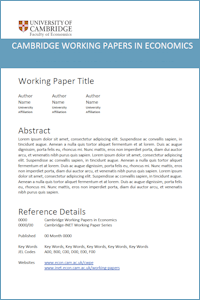
Grimston, M. and Nuttall, W.
The siting of UK Nuclear Power Installations
CWPE1344
Abstract: choosing a suitable site for a nuclear installation requires the consideration and balancin9 of several factors which are sometimes in tension with one another. One particularly interesting tension is a human and demographic one. On the one hand it is beneficial to place nuclear stations close to centres of population, to reduce transmission losses and other costs (including to the local environment) of transporting electricity over large distances from generator to consumer. On the other it is advantageous to place nuclear stations some distance away from such population centres in order to minimise the potential human consequences of a major release of radioactive materials in the (extremely unlikely) event of a major nuclear accident, not only in terms of direct exposure but also concerning the management of emergency planning, notably evacuation. This paper considers the emergence of policies aimed at managing this tension in the UK. In the first phase of nuclear development (roughly speaking 1945 to 1965) there was a highly cautious attitude, with installations being placed in remote rural locations with verylow population density. The second phase (1965 to 1985) saw a more relaxed approach allowin9 Advanced Gas-Cooled Reactor construction closer to population centres (in ‘semi-urban’ locations, notably at Hartlepool and Heysham). In the third phase (1985 to 2005) there was very little new nuclear development, Sizewell B (the first and so far only pressurised water power reactor in the UK) being co-located with an early Magnox station on the rural Suffolk coast. However, there was considerable effort expended on trying to find a site for disposal of radioactive wastes. Renewed interest in nuclear new build grew from 2005 onwards and led to a number of sites being identified for new reactors before 2025; all having previously hosted nuclear stations and including the semi-urban locations of the 1960s and 1970s. Finally, some speculative comments are made as to what a ‘fifth phase’ starting in 2025 might look like.
Keywords: Nuclear Power, Safety, Planning, Environmental Protection
JEL Codes: K32 L94 N74
PDF: https://www.econ.cam.ac.uk/research-files/repec/cam/pdf/cwpe1344.pdf 
EPRG Paper Link: 1321
Open Access Link: https://doi.org/10.17863/CAM.5722
